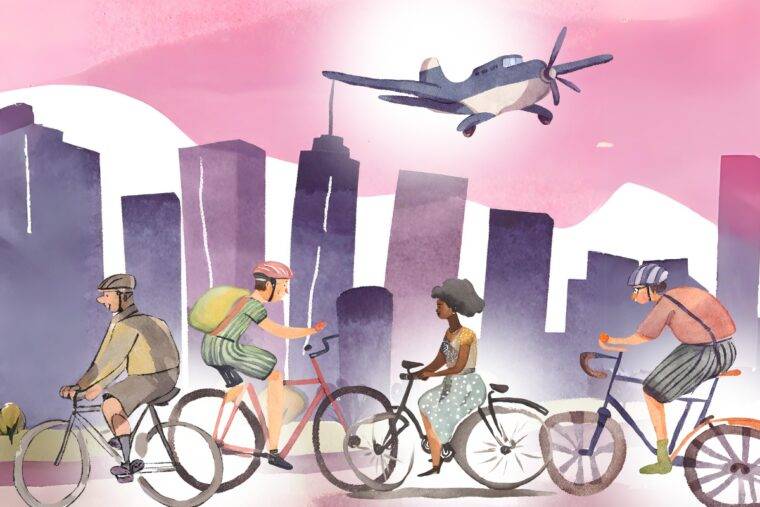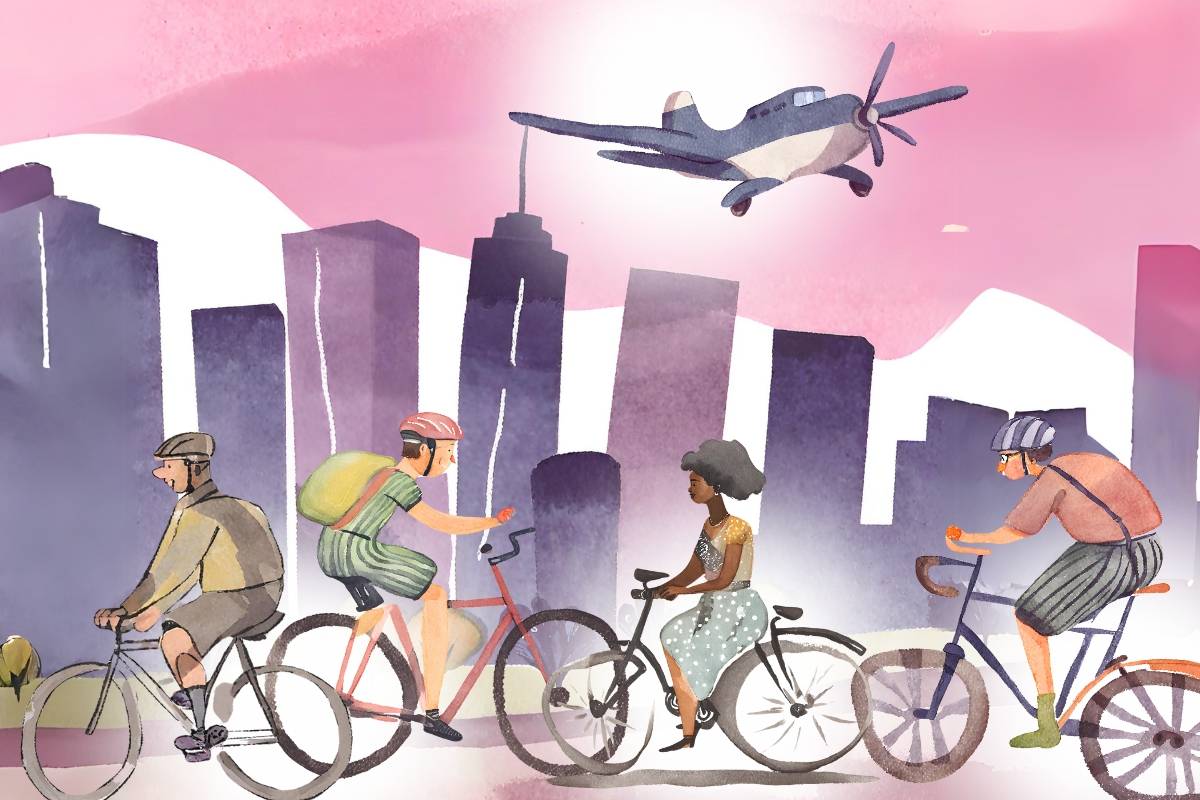
The world is becoming increasingly urbanized. According to data shared by the United Nations (UN), “more than half of the global population now live in urban areas.”
This is up from “one-third in 1950 and is projected to increase to around two-thirds in 2050”.
Cities must adapt to accommodate change to sustain these developments and successfully manage urban growth. But where to start? Urbanization comes with challenges like congestion, pollution, and an increased demand for efficient transportation.
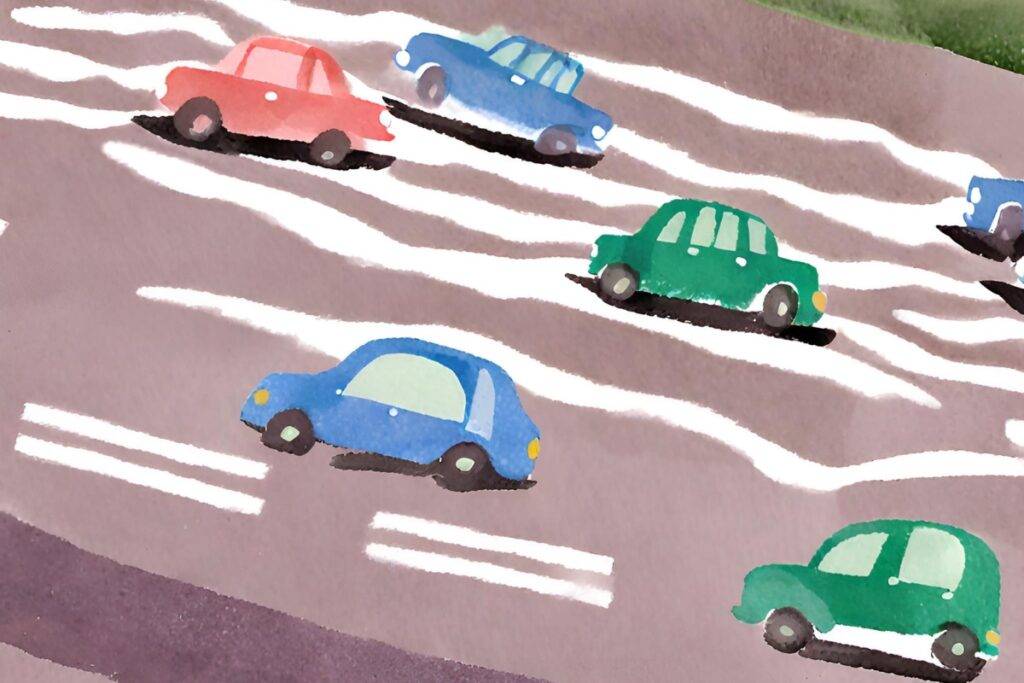
Why Bicycles Are the Future
“The streets that were once designed for a different pace of life are now clogged with vehicles, leading to congestion, increased carbon emissions, and a strain on existing infrastructure. As we confront these challenges, it is now clear that a shift in urban mobility is not just a luxury but a necessity,” eBee.africa reports.
Sub-Saharan Africa is dealing with the influx of people into cities by introducing electric bikes. “They have been proven to reduce congestion, decrease air pollution, and promote a healthier lifestyle,” eBee.africa found.
This trend has already brought large-scale change in cities like Amsterdam, Copenhagen, and, most recently, Paris.
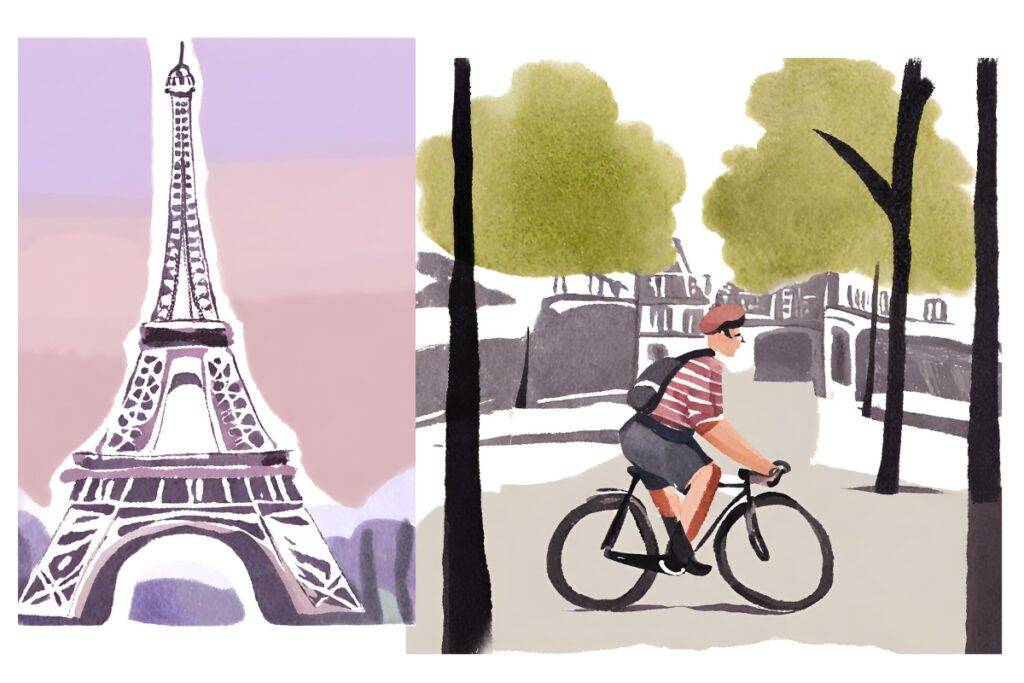
Paris is Leading the Way
Bike counting data recently released by the city of Paris showed a doubling of usage of bicycle lanes between 2022 and 2023 during peak hours. The shift for Paris started in 2019 during public transport strikes that brought the city to a standstill; this, followed by the pandemic lockdown, acted as the final catalyst, prompting a noteworthy change in Paris’s attitude towards cycling.
Since then, the city has gradually invested in cycling-specific infrastructure, including expanded bike lanes and routes. This transformation is largely attributed to the efforts of Paris Mayor Anne Hidalgo, a member of the Socialist Party, aiming to reduce the number of cars on the bustling streets of Paris.
In addition to the increased infrastructure, Paris also boasts its version of London’s famous Boris bikes – the Vélib’ Métropole. This public bike-sharing transportation service provides a sustainable alternative to driving, contributing to reduced emissions and pollution in and around the city.
“2023 data, gathered by bike and road counters in the City of Paris, reveals that cycling has even tripled in certain parts of the city. During peak hours, bikes reportedly outnumber cars on specific representative axes of the capital, such as Avenue de Flandre, Boulevard Voltaire, and Boulevard Magenta.”
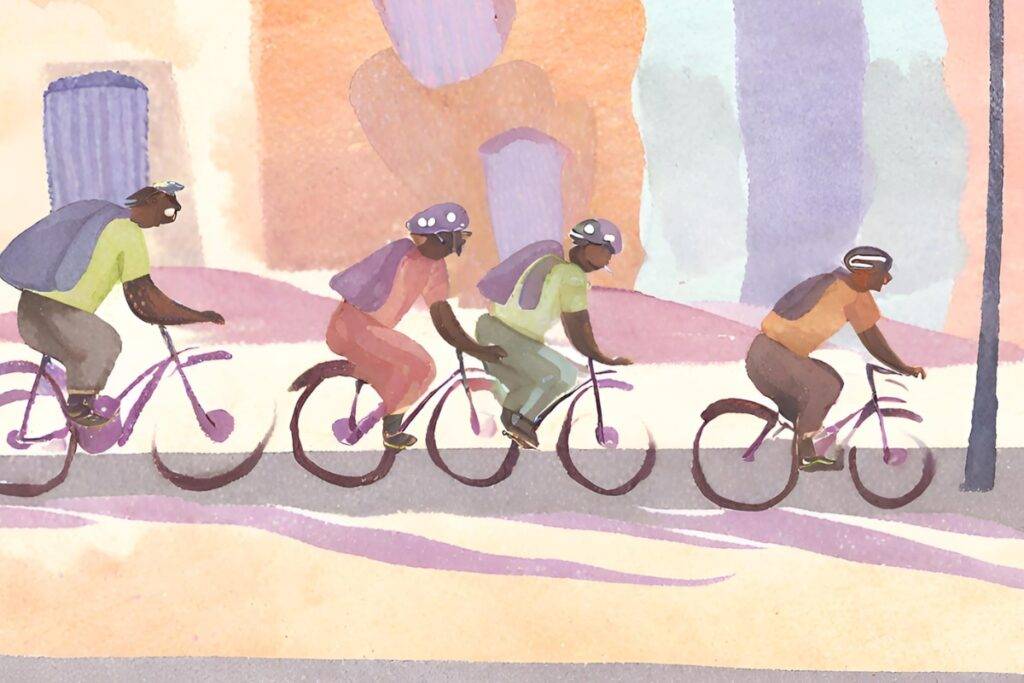
More and More People Are Cycling
According to data collected by Statista, millions of people participate in cycling daily, with the number of bicycles sold in the European Union in 2021 amounting to over 22 million.
“Meanwhile, bikes and cycling accessories represent a key global market, and in 2021, the number of bike shops in the Netherlands amounted to over 3,000.
“While the industry was affected by the coronavirus (COVID-19) pandemic, sales have largely recovered. The number of bikes sold in Great Britain in 2021 amounted to around 3.25 million, an increase of over 11 percent from the previous year.
“Participation levels are also strong outside of Europe, with the number of people participating in cycling in the United States totaling over 51 million,” Statista reported.
In an article titled, ‘Bicycles And Buses Will Be Future’s Dominant Modes Of Urban Mobility, Predict 346 Transport Experts’, Carlton Reid from Forbes writes, “The experts say that personal car use in the cities of the future won’t be sustainable, and policymakers will have to legislate to remove cars from the urban environment. If this occurs, the majority of the experts believe the full decarbonization of the transport sector is possible by mid-century.”
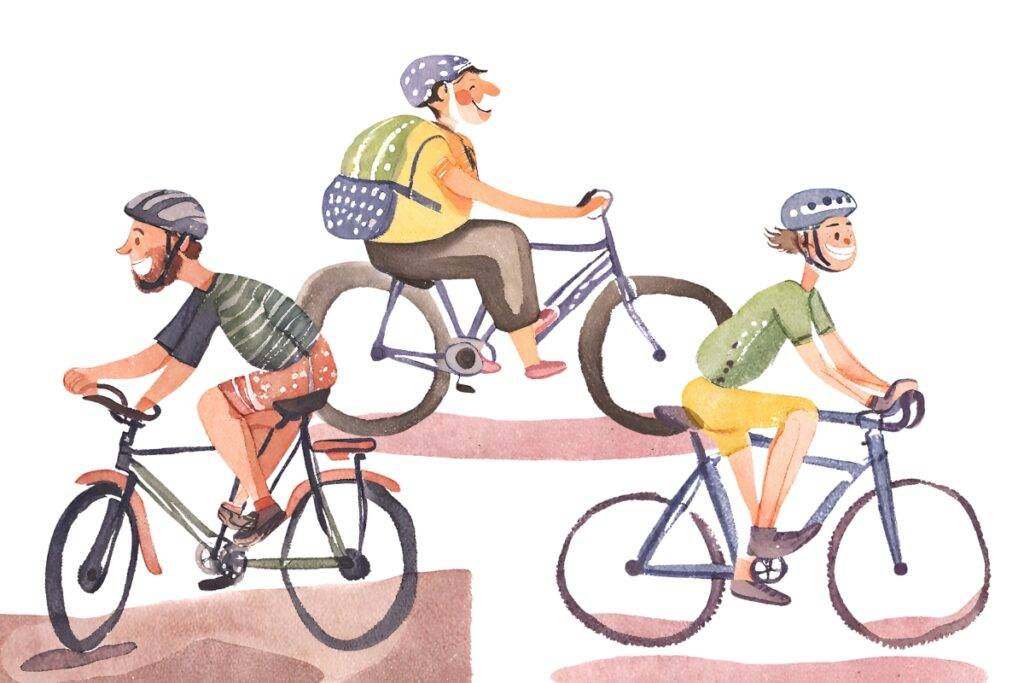
Why Bicycles Are the Future of Urban Mobility
Bicycles Reduce Traffic Congestion
Bicycles take up significantly less space than cars or public transport vehicles. In densely populated urban areas, adopting bicycles can greatly reduce traffic congestion. This can lead to more efficient travel within the city and potentially less need for large-scale infrastructure like wide roads or parking spaces.
Bicycles Offer Several Environmental Benefits
Bicycles are eco-friendly as they don’t emit greenhouse gases or pollutants. Their use helps reduce the carbon footprint and improve air quality, which is particularly important in cities struggling with air pollution. This can have a positive impact on public health and the environment.
Bicycles are Good for Health and Fitness
Cycling is an excellent form of exercise that can improve cardiovascular health, muscle strength, and flexibility. Encouraging bicycle use in urban areas can lead to a healthier population, potentially reducing healthcare costs related to sedentary lifestyles, such as obesity, heart disease, and diabetes.
Bicycles are Cost-Effective
Bicycles are much cheaper than cars or motorcycles in terms of initial purchase and ongoing maintenance and operation. This makes them an accessible mode of transportation for a wide range of people, including those with lower incomes. Additionally, cities that invest in bicycle infrastructure often find it more cost-effective than expanding roadways or public transport systems.
Bicycles Help Make Cities More Liveable
Incorporating bicycle-friendly infrastructure into urban planning (like bike lanes, parking, and traffic laws) can make cities more liveable. It encourages a more active, community-oriented lifestyle, reduces noise pollution and can lead to the development of more green spaces. This contributes to the overall quality of life in urban environments.
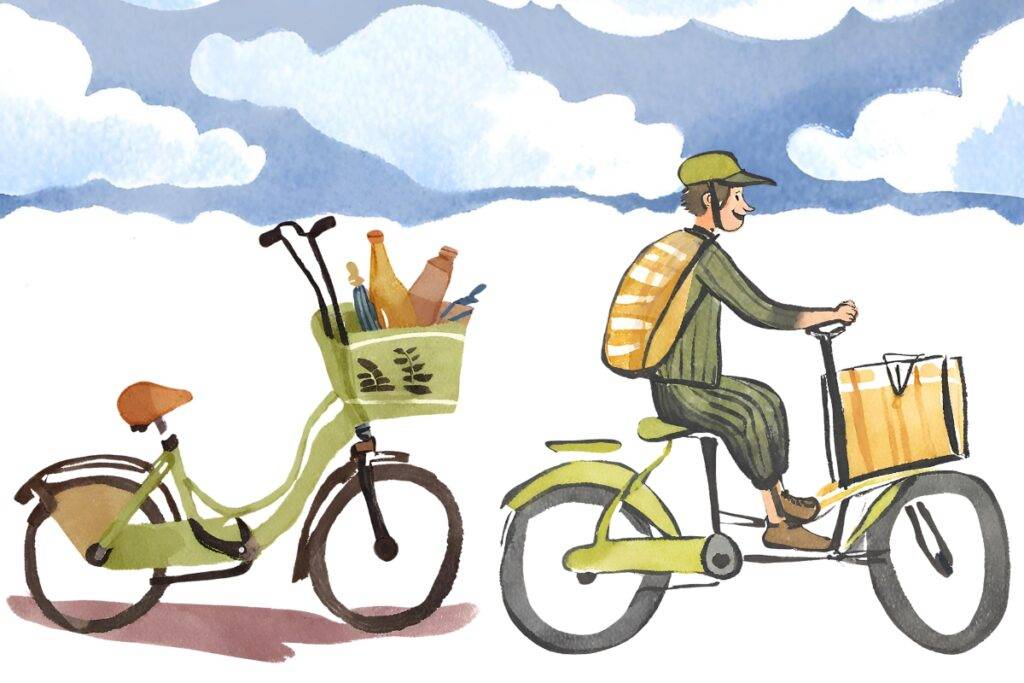
Cargo Bikes: The Future Is Loading
A quiet revolution is underway in London, transforming how people work and goods are transported. Traditionally, tradespeople such as electricians, plumbers, and gardeners have been synonymous with vans as their primary mode of transportation to job sites.
However, a paradigm shift is occurring, challenging the conventional reliance on motor vehicles and embracing the power of pedal-driven cargo bikes.
Businesses leading this transformative wave have fully embraced cargo bikes as efficient alternatives to traditional vans. The UK government, recognizing the potential of electric cargo bikes, has actively encouraged their use for last-mile deliveries through the Transport Decarbonisation Plan.
In the heart of London, Transport for London (TfL) has published the Cargo Bike Action Plan, advocating for cargo bikes as affordable, safe, clean, and efficient alternatives to vans. The plan envisions cargo bikes as the leading option for last-mile freight and servicing trips in the city. This vision is further championed by the Cargo Revolution campaign, which collaborates with boroughs to improve cargo bike accessibility and promotes their benefits.
“The overarching goal of the Mayor’s Transport Strategy is that by 2041, 80% of journeys are to be made by walking, Cycling and public transport in London. “
– The Cargo Bike Action plan
A recent study by Michael Bissel and Sophia Becker, published in ScienceDirect, looked at the impact of cargo bike sharing on car ownership and compared user motives for using cargo bikes and cars. The study revealed that cargo bike sharing significantly contributes to reducing car ownership.
Users generally perceive cargo bikes as superior in affective, symbolic, environmental motives, flexibility, and price, while cars remain superior in some instrumental attributes like safety, speed, and comfort. The study suggests that improving cargo bike infrastructure and technology and promoting positive social norms towards cargo bikes could enhance their competitiveness against cars.
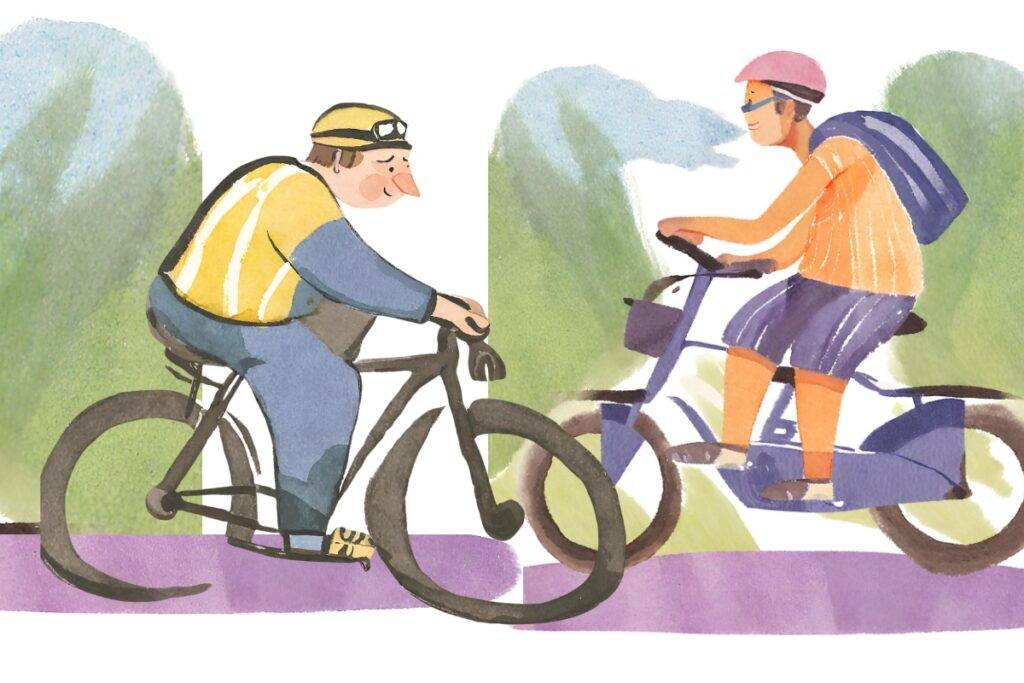
Other Emerging Cycling Trends
Electric Bikes
Electric bikes are becoming increasingly popular for urban commuting, thanks to their potent motors and extended battery life. These bikes can cover significant distances on a single charge, making them ideal for city landscapes and steep ascents.
Mobility Hubs
According to an article published by Planetizen, there is a growing trend in urban areas toward creating mobility hubs. These are mini-stations offering a range of personal mobility options, from bike-sharing and scooters to private mobility and charging stations.
Redesigned Streetscapes
Urban design is increasingly accommodating bicycles and other micromobility devices. This involves redesigning streets to include protected areas for cyclists and micro-mobility users and moving away from car-centric designs.
Decreased Need for Vehicle Parking
As more people opt for bicycles and other micro-mobility devices, the demand for parking private motor vehicles is expected to decline. This shift is facilitated by robust shared micro-mobility programs and the increasing popularity of cargo e-bikes, which can carry more and thus replace motor vehicle trips more effectively.
Diverse Bicycle Models
The market is seeing a variety of bicycle models suited for urban commuting. These include bikes with features like hydraulic disc brakes for better-stopping power in wet conditions, front suspension forks for uneven paths, and internally geared hubs for low maintenance. Some models focus on style and comfort with classic designs, while others are more practical with features like large cargo racks and integrated lighting for safety.
As urban populations swell and city infrastructures buckle under the pressures of modern demands, bicycles are clearly emerging as the silent harbingers of a transportation revolution.
Share the  Love
Love
The post 2024 Cycling Trends: How Bicycles Are Changing Urban Mobility appeared first on Discerning Cyclist.
